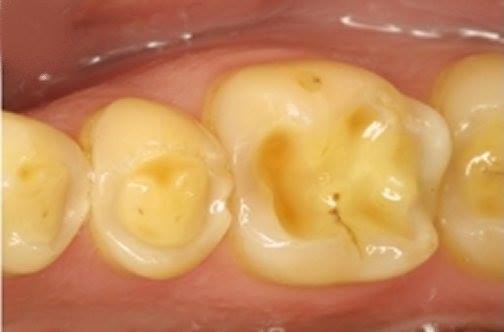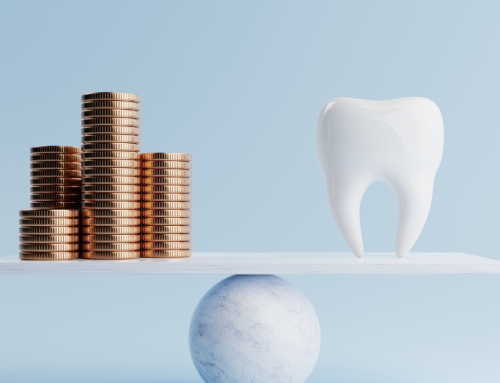There may in fact be some bruxism going on here, but without a full examination and history it’s hard to say if the wear facets are natural wear or due to habit. And yes, bruxers often get some dentin cupping, even without acid erosion, primarily from toothbrush (or more accurately, toothpaste) abrasion once the protective enamel is bruxed away.
This case, however, is primarily acid erosion. The clue is the deeply cupped-in dentin and smooth rounded surfaces. If it were only bruxism, the surfaces would be a lot flatter with sharper edges, less pronounced dentin cupping, and typically more flaking and chipping of the enamel edges.
Where is the acid coming from?
Usually, it’s dietary. Your main culprit is citric acid (or acetic acid, ie. vinegar). With some questioning, you’ll likely find this person likes sports drinks or snacks on fruits (or smoothies), or sucks on lemon candies, or maybe lots of oil/vinegar on salads. Oddly, it’s the healthy people who tend to have diet-related erosion.
Also keep in mind, anything carbonated has carbonic acid in it (the bubbles make the water acidic), so even chronic sipping of plain Perrier or club soda can cause erosion. A carbonated drink that also has citric acid as an ingredient is doubly erosive (think Red Bull).
You probably already know this, but if someone habitually consumes acidic food/drinks, have them swish with water after. Not brush their teeth. Brushing will scrub off the weakened enamel crystals, never to be recovered, accelerating the damage. Rinse with water and let the enamel remineralize from the saliva, which takes a few hours.
Let’s talk GERD.
If you manage to rule out all other possible sources (because patients are so great at remembering everything), suggest the patient see their MD for an evaluation.
Often GERD has no symptoms, but sometimes patients have a burning in their throats in the morning or chronic cough. It’s important and not just because teeth get damaged by GERD. It also increases the risk of various malignancies, especially esophageal cancer. So if that’s what’s going on, it really needs to be addressed.
So, you suggest your patient visit their MD. And your patient immediately books an appointment to see their doctor. And they have a full report for you to review at their next hygiene appointment. Um, or not. But keep (nicely) bugging them about it if you feel it’s likely GERD.
There you go!
And if you thought that it was only bruxism, don’t worry – you’re not alone! This is tricky, especially with overlapping factors or when seeing the patient for the first time. And, without referring to past records (photos or study models), it’s hard to know if it’s active.
Please feel free to add your thoughts if you feel I left something out. And if this answer was too long, let me know and I’ll try to tighten up future posts.












